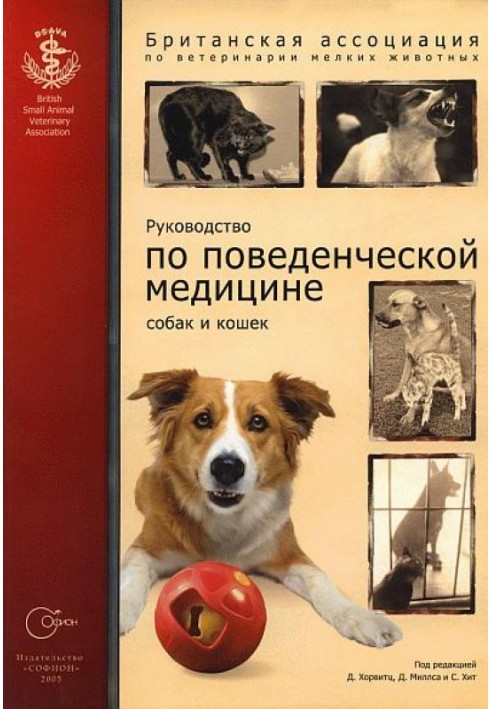A Guide to Behavioral Medicine for Dogs and Cats
 Instant download
Instant download
after payment (24/7)
 Wide range of formats
Wide range of formats
(for all gadgets)
 Full book
Full book
(including for Apple and Android)
This guide, compiled by an international team of authors (from the UK, USA, Canada, Belgium, France, Australia), discusses in detail the conditions for the development of normal social behavior in dogs and cats, the causes leading to various behavioral deviations, the forms of these disorders, methods their diagnosis and treatment. The book can serve as a training and reference tool for correcting unwanted behavior of these pets. Intended for veterinarians and students of veterinary universities. The authors and publishers are not responsible for the results of using medications mentioned in the book. Details regarding dosages and methods of administration of drugs should be checked in specialized literature.
BSAVA, Behavior. British Association for Small Animal Veterinary Medicine (BSAVA) previously published the Dog Behavior Manual and the Cat Behavior Manual, which pioneered the recognition and management of behavioral problems as an important aspect of veterinary practice. The success of these publications, which have become classics, prompted the Association to create a new manual on the behavior of dogs and cats, the translation of which is offered to the attention of readers.
The book was written by well-known specialists in behavioral medicine from different countries (Great Britain, Ireland, USA, France , Canada, Belgium, Australia) and is addressed primarily to general veterinarians. It contains both the necessary amount of theoretical information and practical, easily implementable advice. At the same time, the material presented, which reflects Almost all forms of unacceptable behavior in pets and modern methods of correcting it will also be useful for those who specifically deal with animal behavior.
At the beginning of the book, detailed information is provided on the organization of advisory assistance on the behavior of pets in veterinary clinics. The next few chapters are devoted to the issues of normal behavior of dogs and cats and its formation in the course of individual development. The basics of learning theory, the physiology of fear, and types of aggression are also covered. However, the main attention is paid to such practical issues as methods of collecting anamnesis, diagnosis, treatment and prognosis for a variety of behavioral abnormalities in pets. Numerous tables make it easier to understand the text and find the necessary information, photographs and specially commissioned drawings, illustrating, in particular, such important points as characteristic poses that can be used to judge the emotions and intentions of the animal. In the last 10-15 years, it has become increasingly clear how significant the role of pet behavior and their psychological well-being is in maintaining good relations between the owner and the pet. The pet's intolerable behavior leads to the breakdown of these relationships, and as a result, many dogs and cats end up homeless or euthanized. Therefore, it is extremely important that veterinarians be able to help owners not only cope with a particular behavioral problem of the animal, but also better understand its body language and psychology. This Guide will enable the practitioner to meet these objectives.
British Small Animal Veterinary AssociationManual of Canine and Feline Behavioral MedicineTranslation from English edited by Ph.D. vet. Sciences Zh. V. Varaksina, Ph.D. biol. Sciences M. D. Grozdova, Ph.D. chem. Sciences I. Ya. Korsakova
Data sheet
- Name of the Author
- Британская ассоциация по ветерин
- Language
- Russian
- Translator
- Ж. В. Вараксина
И. Я. Корсакова
Марина Дмитриевна Гроздова















